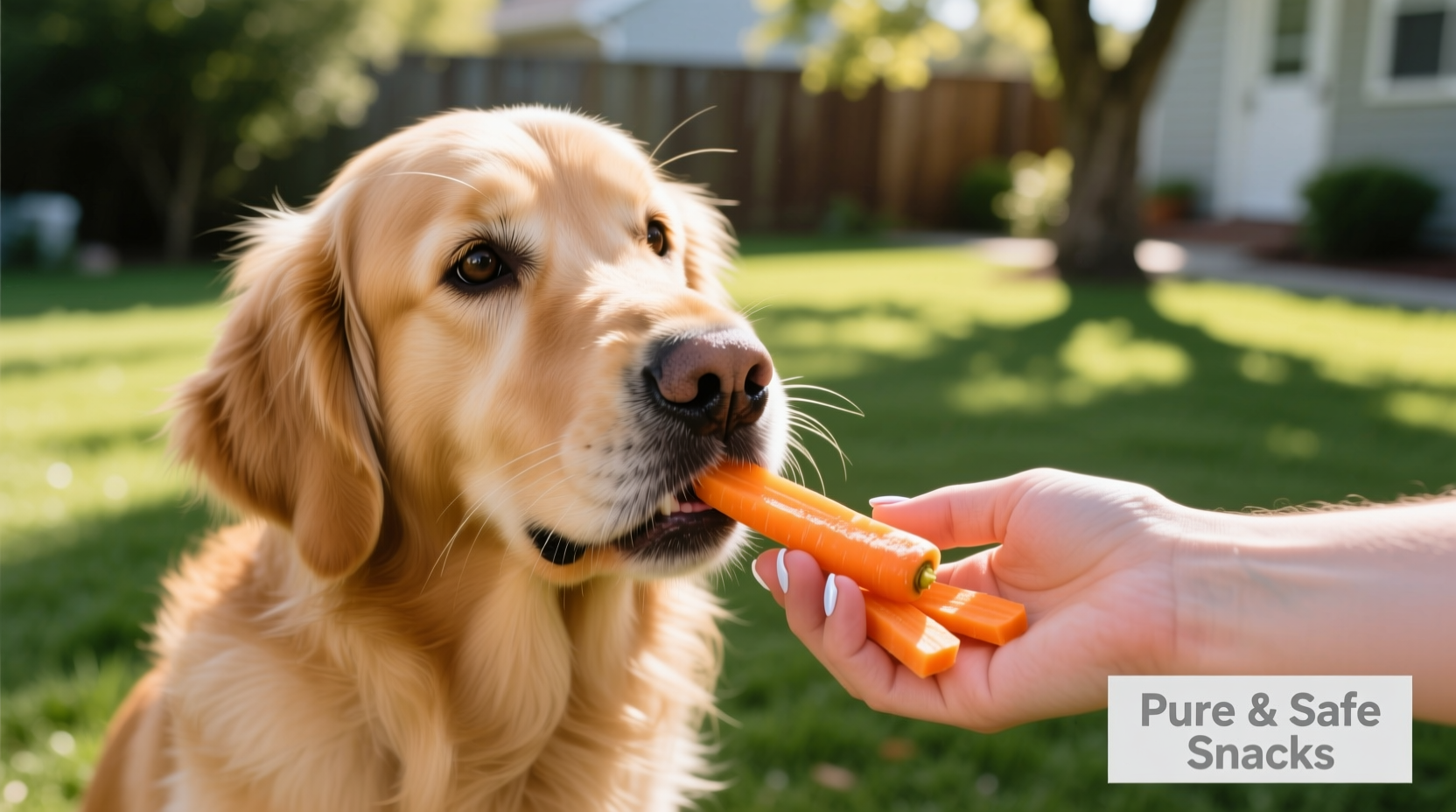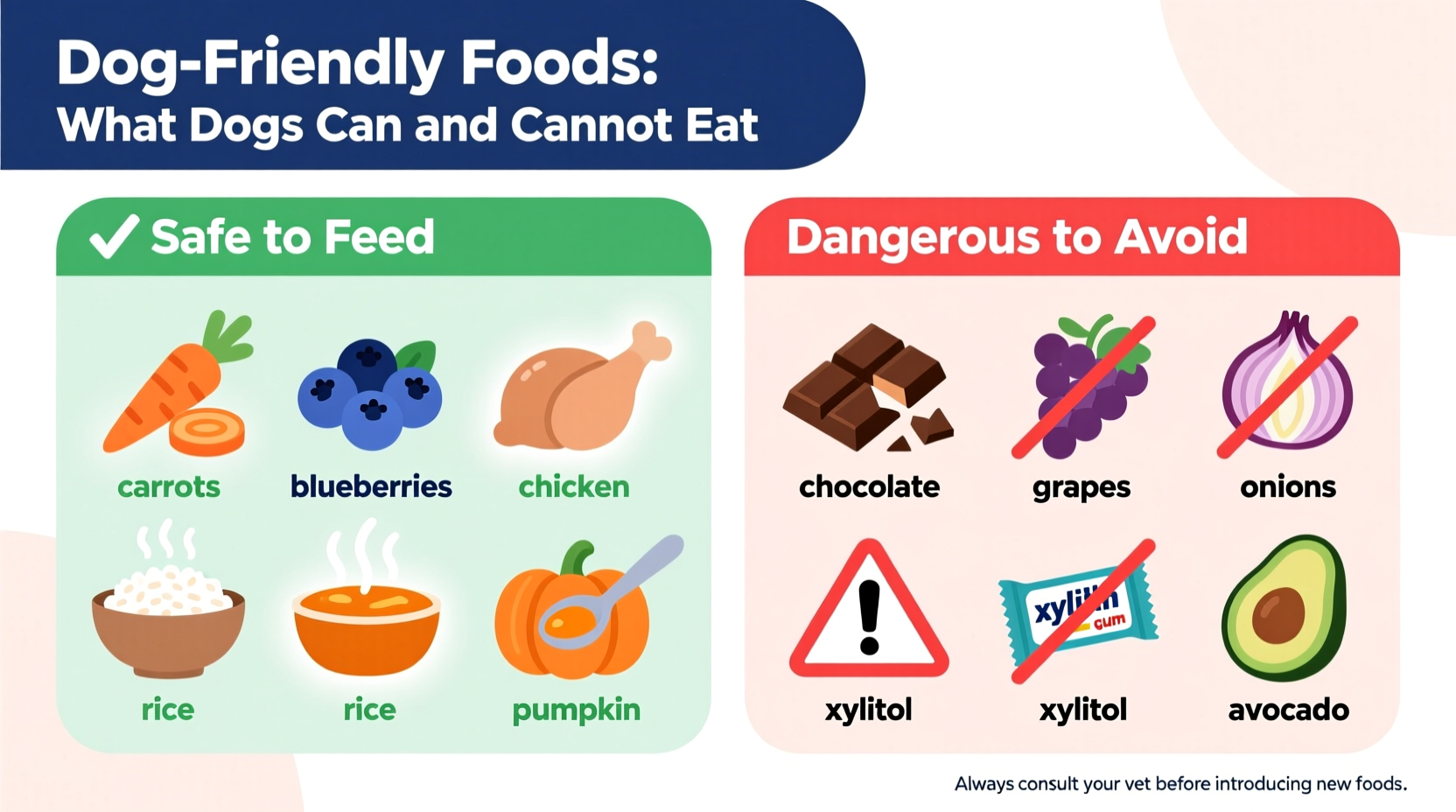Quick Reference: Essential Dog Food Safety Guide
Understanding what foods dogs can and cannot eat prevents dangerous health emergencies. This comprehensive guide provides vet-approved information on over 50 common foods, helping you make safe choices for your canine companion. We've organized information based on urgency and frequency of owner questions, so you can find critical information when you need it most.
Immediate Danger: Foods That Require Emergency Care
Some human foods cause rapid, severe reactions in dogs. The American Kennel Club identifies these as requiring immediate veterinary attention:
- Chocolate - Contains theobromine causing vomiting, seizures, and heart problems. Dark chocolate is most dangerous.
- Grapes and raisins - Can trigger acute kidney failure even in small amounts.
- Xylitol (found in sugar-free products) - Causes rapid insulin release leading to hypoglycemia and liver failure.
- Onions and garlic - Damage red blood cells causing anemia.
- Cooked bones - Splinter and cause internal injuries.
| Food | Danger Level | Immediate Symptoms | When to Call Vet |
|---|---|---|---|
| Chocolate (per kg of dog) | High (dark > milk) | Vomiting, hyperactivity | Any amount of dark chocolate |
| Grapes/Raisins | Critical | Vomiting, lethargy | Within 2 hours of ingestion |
| Xylitol | Critical | Weakness, collapse | Immediately after ingestion |
| Onions/Garlic | Moderate-High | Heavy breathing, pale gums | Within 12 hours |
Common Household Foods Safe for Dogs
Many human foods provide nutritional benefits when given appropriately. According to Veterinary Partner, these foods can be safely incorporated into your dog's diet:
Fruits Dogs Can Enjoy
- Apples (seedless) - Rich in vitamins A and C. Remove seeds which contain cyanide.
- Blueberries - Packed with antioxidants. Ideal training treats.
- Bananas - High in potassium but feed sparingly due to sugar content.
- Watermelon (seedless) - Hydrating summer treat. Remove rind.
Vegetables Safe for Canine Consumption
- Carrots - Excellent for dental health. Serve raw or cooked.
- Green beans - Low-calorie snack rich in fiber and vitamins.
- Cucumbers - Refreshing treat with minimal calories.
- Pumpkin (plain, cooked) - Helps with digestive issues.

Context Matters: When 'Safe' Foods Become Problematic
Food safety depends on multiple factors beyond the food itself. The American Veterinary Medical Association emphasizes these critical context boundaries:
- Dog size matters - A grape might seriously harm a Chihuahua but cause milder symptoms in a Great Dane.
- Pre-existing conditions - Dogs with pancreatitis shouldn't eat fatty foods like bacon, even in small amounts.
- Preparation method - Plain cooked chicken is safe, but fried chicken with seasonings becomes problematic.
- Frequency of feeding - Occasional apple slices are fine, but daily fruit consumption can cause digestive upset.
Emergency Response Protocol
If your dog consumes a toxic food, follow these vet-recommended steps:
- Stay calm - Your anxiety can stress your dog further.
- Identify exactly what was eaten - Check packaging for ingredients and amounts.
- Contact your veterinarian or pet poison control - The ASPCA Animal Poison Control Center (888-426-4435) provides 24/7 assistance.
- Do not induce vomiting without professional guidance - Some toxins cause more damage coming back up.
- Bring a sample of the food or packaging to the vet appointment.
Practical Feeding Guidelines for Dog Owners
Implement these evidence-based practices for safe food sharing:
- Follow the 10% rule - Treats should comprise no more than 10% of your dog's daily calories.
- Introduce new foods gradually - Start with small amounts to monitor for reactions.
- Avoid seasoning - Salt, pepper, and other spices can irritate your dog's digestive system.
- Consider your dog's age - Puppies have more sensitive digestive systems than adult dogs.
- Consult your vet before making dietary changes - Especially for dogs with health conditions.
What About Popular Human Foods?
Many owners wonder about specific foods they regularly consume. Here's the current veterinary consensus:
- Peanut butter - Safe in moderation (choose xylitol-free varieties). Great for hiding medication.
- Eggs - Cooked eggs provide excellent protein. Never feed raw due to salmonella risk.
- Rice - Plain cooked rice helps settle upset stomachs.
- Cheese - Small amounts are usually fine, but many dogs are lactose intolerant.
- Avocado - The flesh is generally safe in small amounts, but the pit is a choking hazard.
Long-Term Dietary Considerations
While occasional human food treats are generally safe, remember that dogs have different nutritional requirements than humans. The Cornell University College of Veterinary Medicine emphasizes that dogs are omnivores with carnivore tendencies requiring specific nutrients not found in many human foods. Always prioritize complete and balanced commercial dog food as the foundation of your dog's diet, using human foods only as occasional supplements.











 浙公网安备
33010002000092号
浙公网安备
33010002000092号 浙B2-20120091-4
浙B2-20120091-4